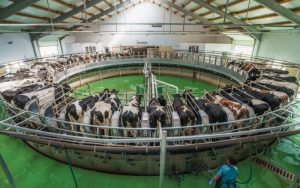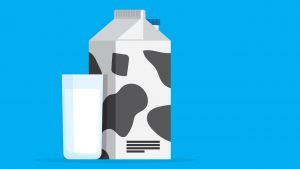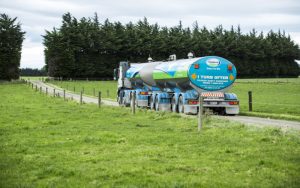
A squeeze on global milk supplies has encouraged many banks to lift their payout forecast above the $8.50 midpoint foreshadowed by Fonterra.
This follows the big co-op revising its range to $7.75/kg-$9.25/kg of milksolids for the 2024-25 season, up from $7.25/kg-$8.75/kg.
Leading the bunch is ANZ, which added another 50c/kg last month to its predicted $9/kg result.
The bank gained confidence from “constrained” global milk supplies. Agricultural economist Susan Kilsby pointed out in the latest report dairy commodity prices were trending higher as buyers became more aware that a massive surplus of milk was unlikely this season.
While it is early days for the season to play out, ASB’s economics team has lifted its forecast from $8.35/kg to $8.60/kg, with Westpac at $8.70/kg and BNZ at $8.50/kg.
Rabobank nudged its milk price forecast to $8.60/kg/MS for the 2024/25 dairy season.
The new numbers were based on global milk supply remaining weak, supported by Oceania dairy commodity prices.

Senior agricultural analyst Emma Higgins said the bank had revised its forecast up by 20c/kg because broad-based demand was likely to support commodity prices for the rest of the season.
“And at this level, the forecast farmgate milk price is at or above where national break-even milk production costs are likely to sit for the 2024/25 season.”
She said global supply and demand were broadly in balance and markets were likely to remain steady in the near-term as exporting regions took time to lift production.
However, the ongoing rebalancing of the Chinese market and the result of the coming United States election both had the potential to alter trade dynamics, and the global dairy market ride was unlikely to be one for the faint hearted, she said.
Since the second half of 2021, combined milk production from the Big-7 dairy export regions — the European Union, the US, New Zealand, Australia, Brazil, Argentina and Uruguay — had only shown growth in three quarters.
This trend was expected to continue with only modest production growth, Ms Higgins said.
“This weak milk supply growth has helped support steady-to-higher dairy commodity prices in 2024, translating into better milk cheques for most dairy producers.’
She said milk production would likely shift upwards on the back of improved margins from cheaper feed prices for most key production regions, but at a manageable rate for dairy markets.

Farmgate milk prices are up at least 10% in the US, the Netherlands and Ireland with Australia appearing to be the exception.
Fonterra chief executive Miles Hurrell said a higher milk price forecast and expected earnings of 60c-70c per share reflected the recent lift in Global Dairy Trade prices and strength of the co-op’s balance sheet.
“It’s still early in the season, with a relatively small proportion of our sales book contracted, so we are maintaining a wide forecast range.”
Milk processing rival Synlait increased its forecast last week to $8.60/kg, up from $8/kg, but warns it continues to take a conservative approach because of exposure to volatile future global dairy commodity prices at the beginning of the season.
The company is working hard to retain farmer suppliers on the back of a nearly $218 million capital raise going to shareholders’ vote on September 18.
Synlait announced to NZX it is committed to delivering a competitive milk price and advanced rate to ensure its on-farm offering remains attractive to suppliers.
Its final milk price for the 2023/24 season will be confirmed when its full-year result goes out at the end of the month.
You can now read the most important #news on #eDairyNews #Whatsapp channels!!!
🇺🇸 eDairy News INGLÊS: https://whatsapp.com/channel/0029VaKsjzGDTkJyIN6hcP1K

























